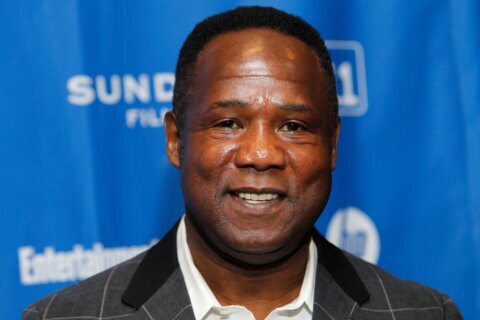Liam Neeson is capable of greatness, most notably his iconic performance as the title hero in “Schindler’s List” (1993), as well as mainstream appeal in holiday romantic comedies like “Love Actually” (2003) and nail-biting action revenge flicks like “Taken” (2008).
Lately, he’s pushed all his chips in on the lattermost genre, hoping his “particular set of skills” will translate across movies, but it all comes down to picking the right material.
This weekend, he stars in the new political action flick “Blacklight,” where themes of FBI corruption had the potential to be compelling with plenty more rewrites to the script.
The plot follows Travis Block (Neeson), a covert government operative who’s overcoming a shady past. When he discovers a secret plot targeting U.S. citizens called Operation Unity, Block begins to question the motives of the very FBI director that he’s always protected.
Aidan Quinn (“Practical Magic”) is fittingly sinister as the corrupt FBI director Gabriel Robinson, Emmy Raver-Lampman (“The Umbrella Academy”) is doggedly determined as the investigative journalist, and Neeson looks the part thanks to his previous role as Deep Throat in “Mark Felt” (2017), which featured a similar political setting in the nation’s capital.
Unlike that film, “Blacklight” only resembles D.C. in the opening rally on the National Mall. After that, it’s clearly filmed in Australia. Global viewers may not care, but it becomes distracting for D.C. viewers. Is that The Wharf? Nope, it’s Melbourne. Is that Georgetown? Nope, it’s Canberra. There’s even an Interstate 66 car chase without bumper-to-bumper traffic!
The location shooting was likely due to COVID-19, so it’s hard to blame filmmaker Mark Williams, who co-created one of TV’s best series in “Ozark” (2017-2022) while directing Neeson in “Honest Thief” (2020). In “Blacklight,” Williams attempts a few directorial techniques, intentionally glitching both the image and soundtrack to show Travis’ OCD.
“I have thoughts looping inside my head, repeating themselves,” Neeson says about his condition. “If I do things three times, I can usually suppress the thought. Sometimes the obsessing makes me better at what I do. Other times, I feel like I should be locked away.”
He is, of course, referring to his backstory, which we won’t spoil here. Let’s just say it dates back to his time serving with Robinson in the Vietnam War before they joined the FBI. His obsession also affects his personal relationships with his daughter (Claire van der Bloom), who begs him to retire to spend time with his granddaughter (Gabriella Sengos).
The screenplay lays the groundwork for touching family scenes, but the on-the-nose dialogue is filled with exposition as characters say exactly what they’re thinking. At first, the script appears that it might be in on the joke with self-aware moments. When Neeson explodes a bunch of Confederate trailer dwellings, a character jokes, “Subtle.”
However, as the film progresses, the script abandons all subtlety. The most egregious example comes when Mira argues with her colleague Pearl in an outlandish exchange:
Mira: “The American people need to know the truth.”
Pearl: “That’s what I used to think.”
Mira: “And you don’t anymore?”
Pearl: “Sometimes I think it’s better to live in the happiness of the unknown.”
Mira: “The United States government is murdering its own innocent civilians.”
(Dramatic pause)
Pearl: “Yeah. That is messed up.”
Understatement of the century.
Another few script polishes would have really elevated this work. There really is a cool movie in here somewhere with a lot to say about corrupt government officials. To the screenwriter’s credit, there are even a few stunning deaths that you won’t see coming.
Sadly, it all builds to a giant home shootout where Neeson lays shockingly unrealistic traps like “Home Alone.” Before the shooting starts, Neeson holds a villain at gunpoint, but when he asks him to open the safe, the villain takes off running with laughably cheesy strides.
If you want a better-crafted example of a home invasion finale seeking payback from the old war days, check out “The Card Counter” (2021) where director Paul Schrader backs his camera out of the room like Alfred Hitchcock’s “Frenzy” (1972). It’s a “less is more” approach that’s much more suspenseful than showing everything with guns blazing.
Let’s put it this way. If Neeson’s Deep Throat were to meet Neeson in a shadowy garage like “Mark Felt” and its parent “All the President’s Men” (1976), the advice for “Blacklight” wouldn’t be to “follow the money.” It would be to “follow the rewrites.”








